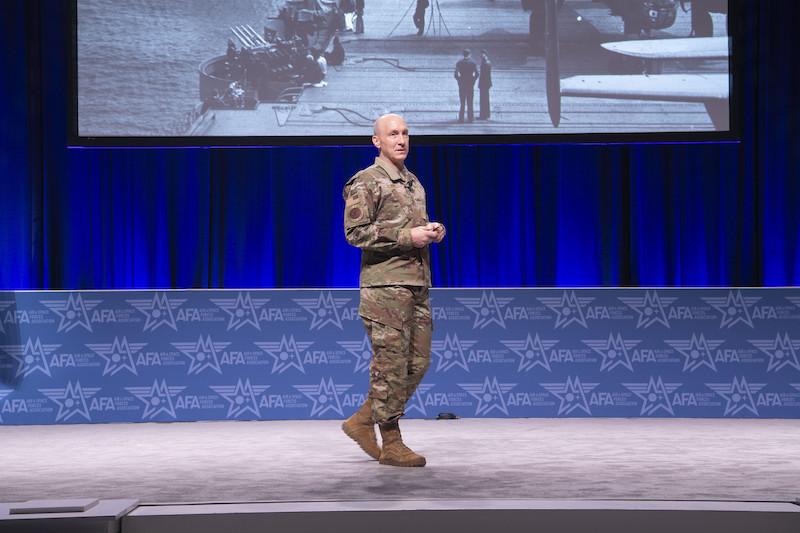
"There is a way that we can both satisfy the ability to share, as well as the ability to protect," says USAF Chief of Staff Gen. David Allvin.
LONDON—With multiple allied and partner nations each developing their own loyal wingman-type uncrewed combat aircraft, the head of the U.S. Air Force sees a way to have them all work together while also protecting each nation’s proprietary technology.
The U.S. Air Force is leading the way with its Collaborative Combat Aircraft (CCA), recently awarding contracts to Anduril and General Atomics Aeronautical Systems Inc. to develop its first increment. The service wants to see this first group operational by the end of the decade, and another increment shortly after.
Chief of Staff Gen. David Allvin, speaking July 18 at the Global Air and Space Chiefs Conference here in London, said software advancements make it relatively simple to have the independent systems work together in a way that does not affect security.
“There is always risk, but I do believe that now with the advent of multi-level security, and different protocols, zero-trust type of approaches ... there is a way that we can both satisfy the ability to share, as well as the ability to protect, and I think we’re seeing some of that in the way we’re developing our [Next Generation Air Dominance] family of systems, which includes Collaborative Combat Aircraft,” Allvin says. “This sandbox that you play in has a reference architecture that is common to many, and so many can come play in that shared architecture while still preserving the proprietary value, if you will, of your own kit.”
The U.S. Air Force has agreed to a common set of standards with its sister services, the Navy and Marine Corps. This includes a common baseline for command and control, communications, autonomy and mission systems standards. This allows the individual CCA fleets to be able to operate together while also looking to keep costs lower.
“I think it’s easier with software than with hardware, quite frankly, and I think that’s something we’re going to have to lean into,” he says.
It is not clear how these would in turn cooperate with closely aligned nations. Air Force and Navy officials have said, for example, they can see an international operator able to control an American CCA.
The Air Force already is working closely with the Royal Australian Air Force, using the latter’s Boeing MQ-28 Ghost Bat to help define its operational constructs, basing and infrastructure needs for CCA. Air Force Secretary Frank Kendall also has said he sees the potential for more international collaboration on future increments, including naming Japan as a future partner.
The UK Royal Air Force also is looking to move forward quickly with its own loyal wingman-type program. In March, the RAF released its Autonomous Collaborative Platforms Strategy, looking to field its own fleet by 2030.





